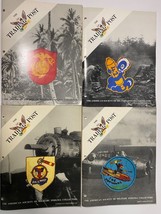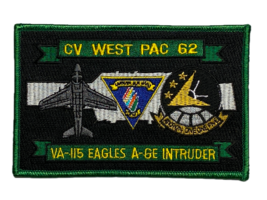Hungary, Master, Parachutist, Para Wing, and 50 similar items
HUNGARY, MASTER, PARACHUTIST, PARA WING, COMMUNIST ERA, 10,000 JUMPS, B&T 2206
$45.00
View full item details »
Shipping options
Seller handling time is 1 business day Details
$4.35 to United States
Return policy
Full refund available within 30 days
Details
Purchase protection
Payment options
PayPal accepted
PayPal Credit accepted
Venmo accepted
PayPal, MasterCard, Visa, Discover, and American Express accepted
Maestro accepted
Amazon Pay accepted
Nuvei accepted
View full item details »
Shipping options
Seller handling time is 1 business day Details
$4.35 to United States
Return policy
Full refund available within 30 days
Details
Purchase protection
Payment options
PayPal accepted
PayPal Credit accepted
Venmo accepted
PayPal, MasterCard, Visa, Discover, and American Express accepted
Maestro accepted
Amazon Pay accepted
Nuvei accepted
Item traits
| Category: | |
|---|---|
| Quantity Available: |
Only one in stock, order soon |
| Condition: |
Used |
| Country/Region of Manufacture: |
Hungary |
| Type: |
Badge |
| Theme: |
Militaria |
Listing details
| Seller policies: | |
|---|---|
| Shipping discount: |
No combined shipping offered |
| Posted for sale: |
April 2 |
| Item number: |
1735043249 |
Item description
HUNGARY, MASTER, PARACHUTIST, PARA WING, COMMUNIST ERA, 10,000 JUMPS, B T 2206
Communist time period which is designated by the red star at the top of the badge.
Original, Vintage, Para Wings. No chips to the enamels.
The history of Hungarian airborne forces can be broadly divided into three phases:
1. World War II (1939-1945):
1939: Following the example of other European nations, Hungary established its first airborne unit, the 1st Parachute Battalion.
1944: The battalion was expanded into the 1st Parachute Regiment.
Limited combat involvement: These paratroopers saw limited action during World War II, primarily engaging in defensive operations against the advancing Soviet forces.
2. Cold War Era (1945-1989):
Post-war re-establishment: After the war, the airborne unit was disbanded but re-established in 1948 as a parachute company.
Expansion and Soviet influence: During the Cold War, under Soviet influence, the company grew into the 62nd Parachute Battalion within the Hungarian People's Army.
Training and exercises: The battalion primarily focused on training and participating in exercises with other Warsaw Pact forces, but it did not see any active combat.
3. Post-Cold War Era (1990-present):
Downsizing and shift: After the fall of the Soviet Union and Hungary's integration with NATO, the 62nd Parachute Battalion was disbanded in the late 1990s.
Focus on special forces: Since then, Hungary's focus in terms of air-deployable troops has shifted towards Special Reconnaissance Forces (SRF) within the Hungarian Defence Forces.
No dedicated airborne unit: As of today, Hungary does not maintain a dedicated airborne unit like a parachute regiment. However, some elements within the SRF receive parachute training and are capable of aerial deployment.
While Hungary no longer boasts a large-scale airborne force, its military continues to emphasize rapid deployment capabilities through specialized units like the SRF, reflecting the evolving needs of modern warfare.
|
Why are we showing these items?
Booth
BlueGrass Militaria |
|

-
Refine your browsing experience
We can show you more items that are exactly like the original item, or we can show you items that are similar in spirit. By default we show you a mix.
This item has been added to your cart
 HUNGARY, MASTER, PARACHUTIST, PARA WING, COMMUNIST ERA, 10,000 JUMPS, B&T 2206 added to cart.
Only one available in stock
HUNGARY, MASTER, PARACHUTIST, PARA WING, COMMUNIST ERA, 10,000 JUMPS, B&T 2206 added to cart.
Only one available in stock
View Cart or continue shopping.
 Please wait while we finish adding this item to your cart.
Please wait while we finish adding this item to your cart.
Get an item reminder
We'll email you a link to your item now and follow up with a single reminder (if you'd like one). That's it! No spam, no hassle.
Already have an account?
Log in and add this item to your wish list.
























































